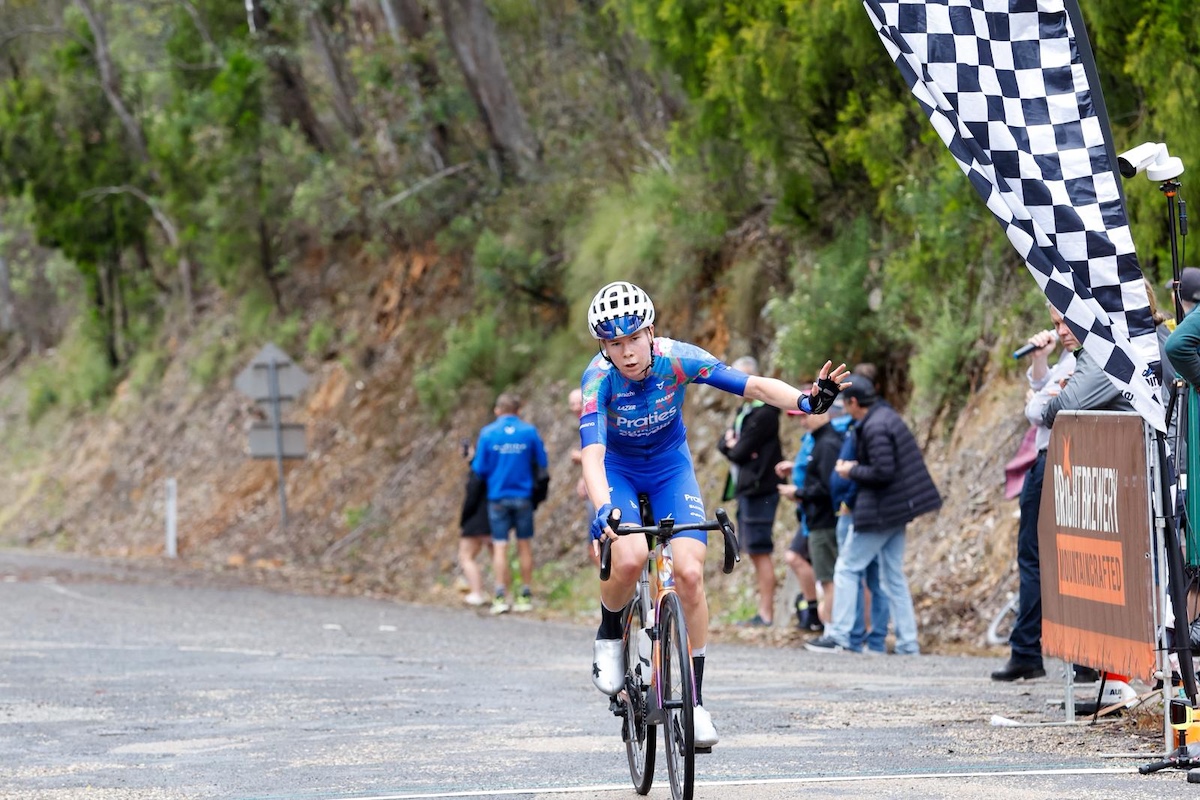You can trust Cyclingnews
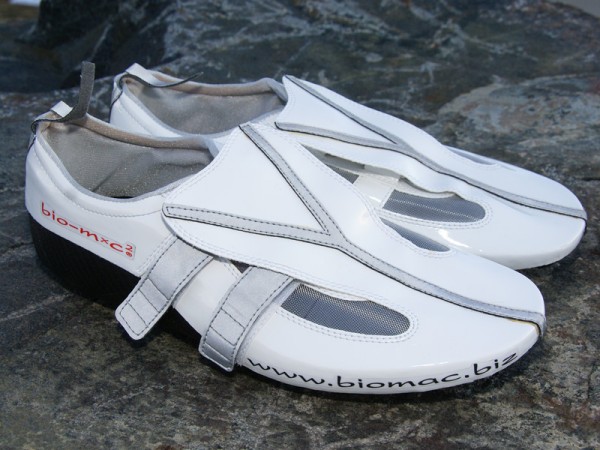
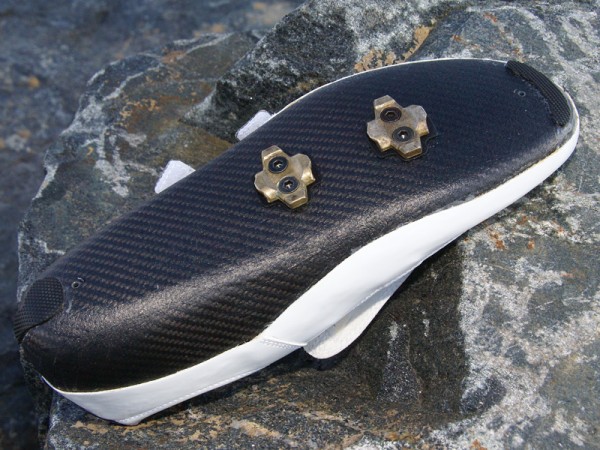
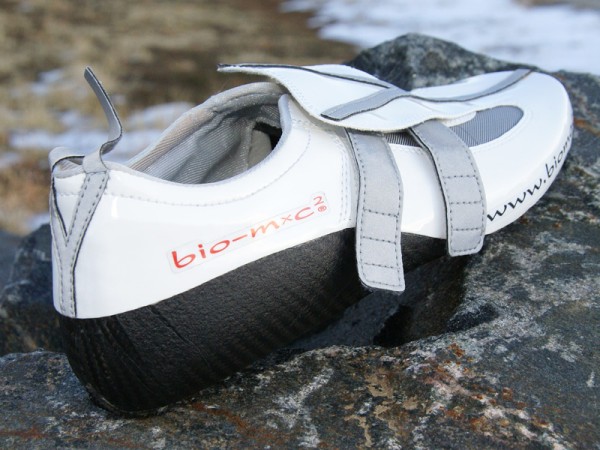
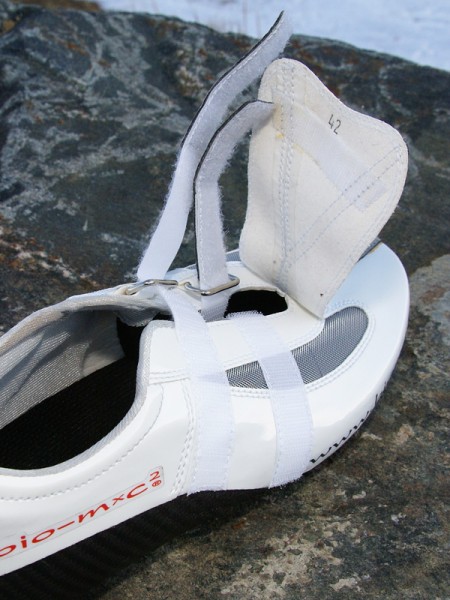
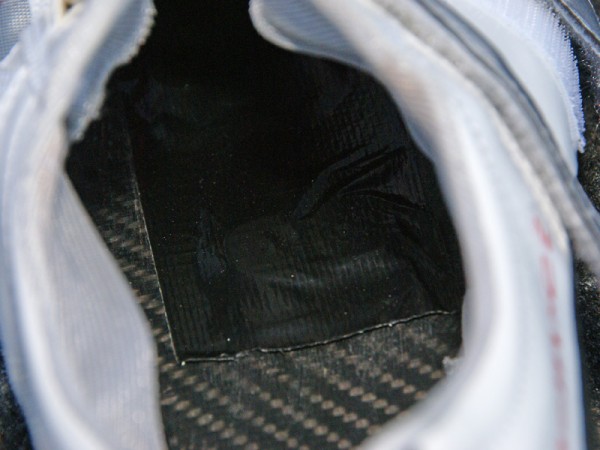
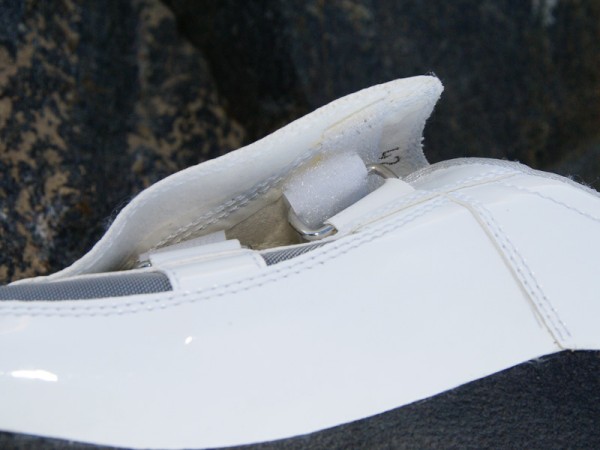
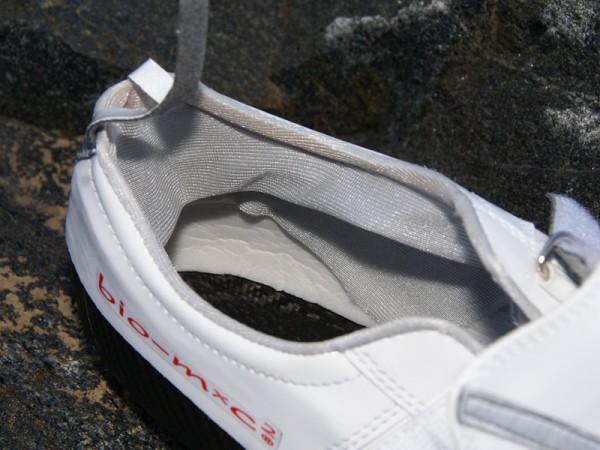
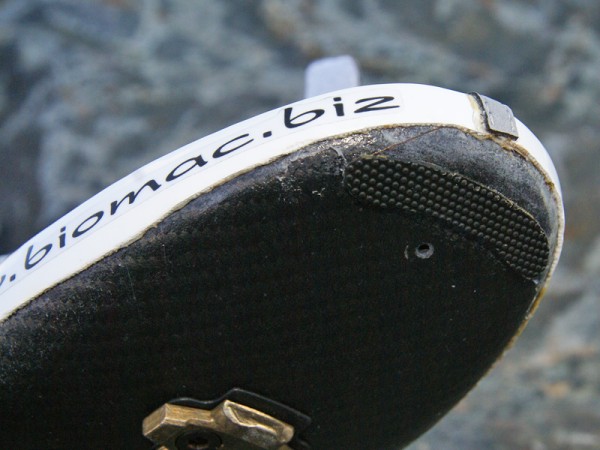
It is commonly accepted that pedal axles should be positioned near the balls of your feet, but is it really the best place? German shoe designer Götz Heine doesn't think so. His 'bio-mxc2' cleat position places the pedal axle roughly beneath the arch of your foot – several centimetres behind what most people would consider normal.
Though unusual, the idea behind Heine's mid-foot or 'arch' cleat position is logical. He and other mid-foot proponents such as renowned coach Joe Friel and Cyclingnews fitness panelist Steve Hogg surmise that the majority of a rider's power is produced by the quadriceps, glutes and hamstrings while the lower leg only serves to stabilise the efforts of what happens above. As such, the lower leg is merely a conduit and doesn't produce enough effective power to justify the metabolic cost.
Moving the cleats back to the arch – a location Heine defines as optimal – thus substantially reduces the workload on the calves and leaves more oxygen and energy remaining for those larger muscle groups to produce more total power before fatigue and exhaustion can set in. In other words, you can go faster for longer with no additional training required aside from adjusting to the new position.
"Compare it to doing push-ups," says Heine. "One time on your fingertips, second time on the palms of your hands. Total [lactic acid production and oxygen consumption] will be equal but the fingertip exercise will exhaust you sooner."
The riding
Interesting enough, but does it work? The mid-foot cleat position feels weird at first but it only took a couple of rides to adapt and dare we admit it, we actually like it – at least most of the time. Most mountain bike riders on platform pedals naturally adopt this position already.
With the relatively flexible lower leg system taken out of the equation, power transmission is noticeably more direct and the power stroke is effectively lengthened. As promised, almost all stress on the calves is relieved – virtually eliminating cramps there – and we really did find ourselves motoring along on flats and extended climbs better than usual.
The latest race content, interviews, features, reviews and expert buying guides, direct to your inbox!
On the downside, the mid-foot position seems to sacrifice some of the 'spring' in your pedal stroke and high-cadence pedaling definitely takes longer to relearn. Sprinters and criterium riders will likely be put off by this but long-distance riders might appreciate the efficient diesel-like feel.
Not surprisingly, the mid-foot cleat concept has also been making headway in the multisport realm – reduced stress on the calves on the bike leaves the legs fresher for the run.
Moving your foot that far forward has substantial ramifications on bike fit, however. We had to lower our saddle over 2cm to compensate for the loss of ankling – where the heels drop at 12 o'clock and the toes point slightly at six o'clock – which makes for a lower and more stable centre of gravity but also requires the front end to come down a similar amount to maintain the overall feel.
In some cases this will just require a rejigging of headset spacers but some bikes simply won't accommodate this. In addition, having the cleat that far rearwards produces gobs of toe overlap.
The shoe
Such extreme cleat positioning doesn't work with conventional cycling footwear so Heine supplied us with his own equally radical –and insanely expensive – Biomac shoes, which tip the scales at a remarkable 348g per pair – about 50g lighter than Pearl Izumi's feathery Octane SL, 150g better than a pair of Specialized S-Works shoes, a substantial 250g under Sidi's Genius 6.6 and roughly equal to one Shimano R300.
Even so, overall sole stiffness is superb thanks to the carbon fibre outsole's unique bathtub-style construction whereby the edges curl up around the entire periphery of the foot and the rear forms an integrated heel counter complete with a notch to prevent tendon irritation.
The resultant U-shaped cross-section is inherently stiffer than a flat plate so it can be made with less material for comparable rigidity. As a side benefit, stack height is a paper-thin 4mm and standard cleat hardware actually has to be shaved down to avoid pressing into the footbed.
It's not all good though. Point stiffness at the small two-bolt cleat could be a little better, there is almost no room for cleat position adjustment, there are no ventilation ports in the carbon structure and walking on hard surfaces is clumsy to say the least. The minimal footbed also offers almost no padding so it's a good idea to drop in your own insoles to avert hot spots.
Heine says his Biomac shoes can be made to work with three-bolt pedal systems, and this may ultimately be the best way to distribute pedalling pressure for those willing to take the plunge.
Heine uses a similarly minimal upper built with a non-absorbent synthetic punctuated with metallic mesh inserts, just two Velcro straps and an outer cover, but we weren't nearly as impressed here as we were with the outsole. The unpadded straps tended to cut into the tops of our feet after a while, heel hold was just average and the stiff feel lacked the glove-like fit of Sidi or Specialized.
On a more general level, finish quality isn't that good and the shoe looks and feels cheap. There were some slight asymmetries left to right, uneven cut lines, visible glue seams, and the slick fabric liner in the heel cup – which admittedly was effective at staving off blisters – is trimmed shockingly roughly.
We can appreciate that Heine builds each Biomac shoe himself but anyone dropping this kind of money is bound to expect something far more polished. Heine can add padding to the straps if requested, a custom-moulded shoe would obviously fit better, and the shoes are still insanely light and stiff. But performance or not, we expect more – much, much more – for 499 euros.
As an alternative, some conventional shoes can be modified to accept a mid-foot cleat position but that route requires careful measuring, a drill and a hearty conviction.
A new way of thinking
Riders who regularly do longer distances at a steady pace owe it to themselves to investigate the concept further – even if only by moving their current cleats as far back as they'll go or experimenting with some older shoes – before making a commitment nearly as expensive as Heine's full-blown Biomac shoes.
The benefits are tangible given the right application and while your riding mates may ridicule you, they may not laugh as hard as you ride away from them at the end of your route.
As to why top-level athletes haven't yet adopted the concept if it's so promising, we say, 'not so fast'. Some already have, such as Swedish pro and two-time UCI road race world champion Susanne Ljungskog, 2008 Tour of Austria winner Thomas Rohregger (Milram), 2007 RAAM two-man team winners Urs Samtleben and Hape Narr, and countless multisport athletes. So, is mid-foot for everyone? Not by a long shot. But don't write it off just yet.




